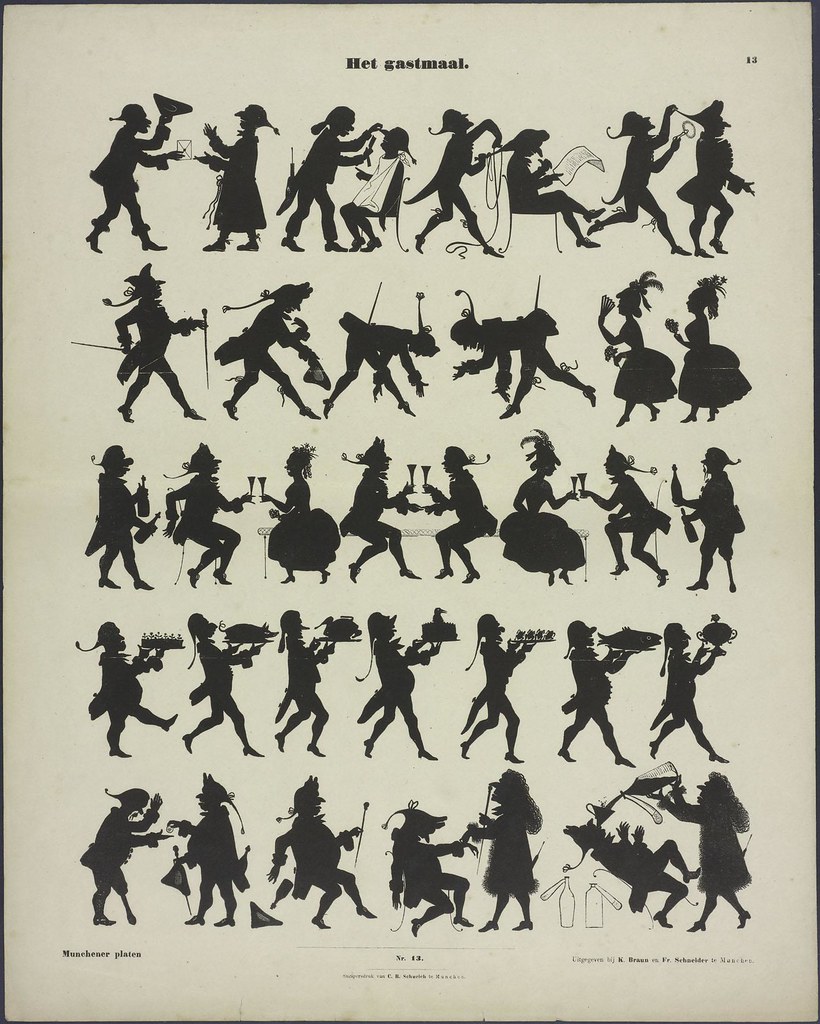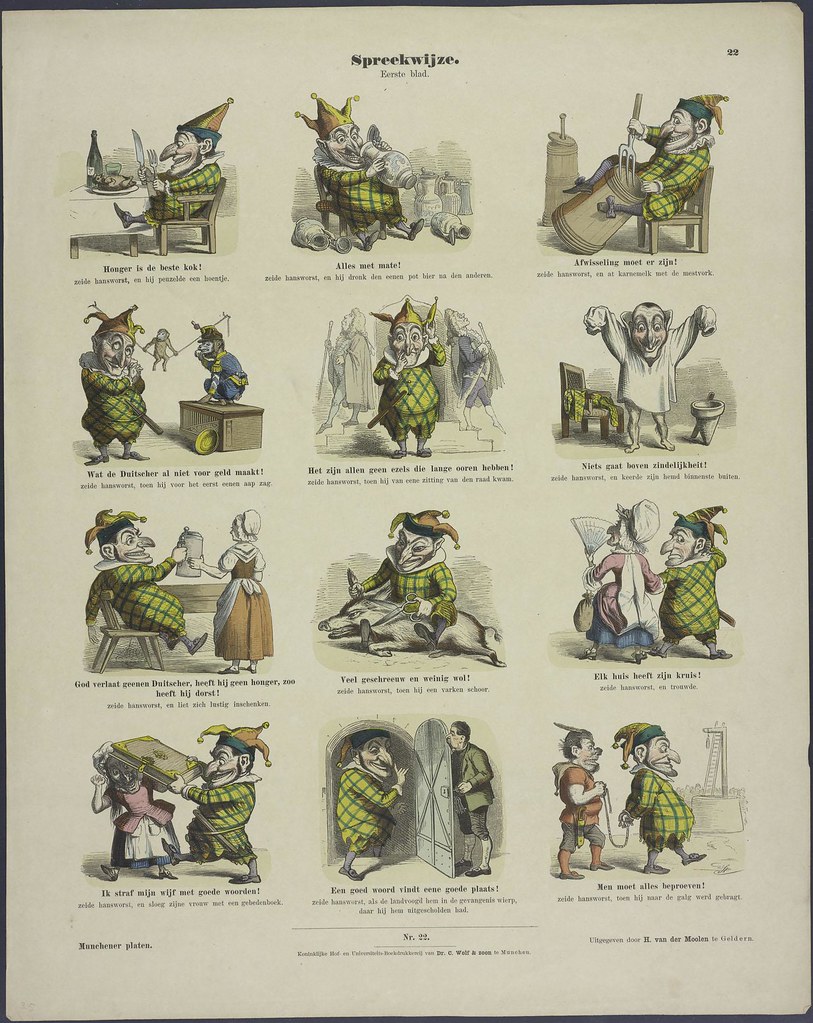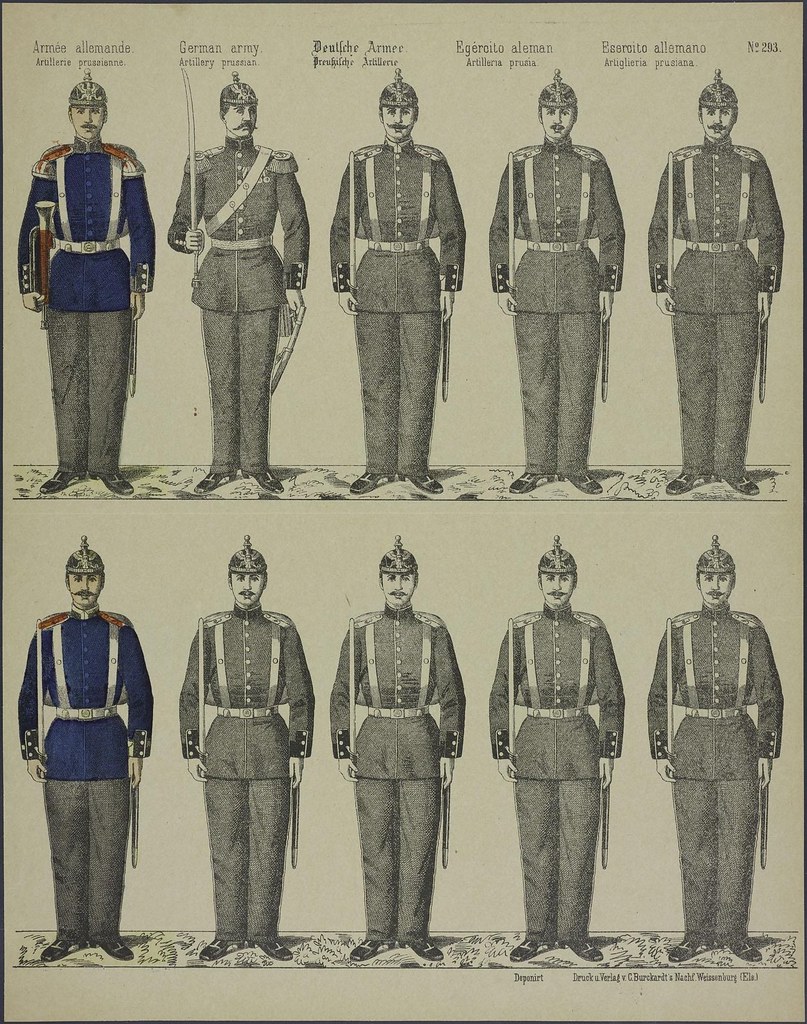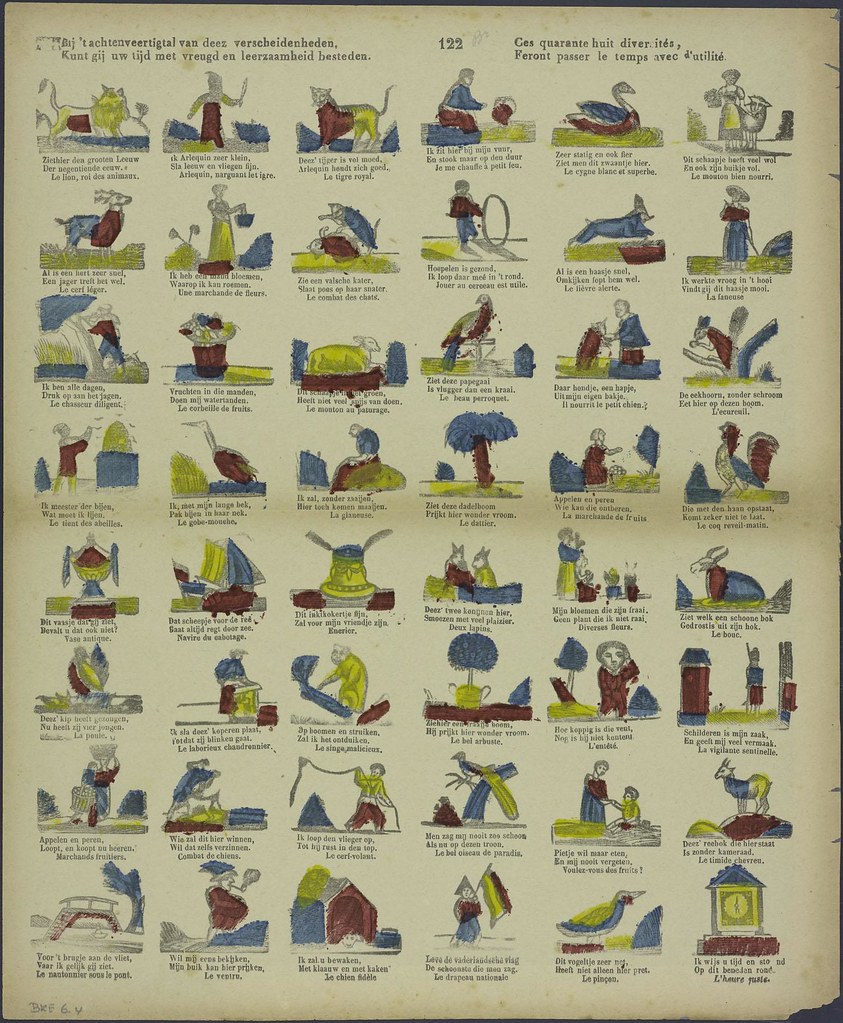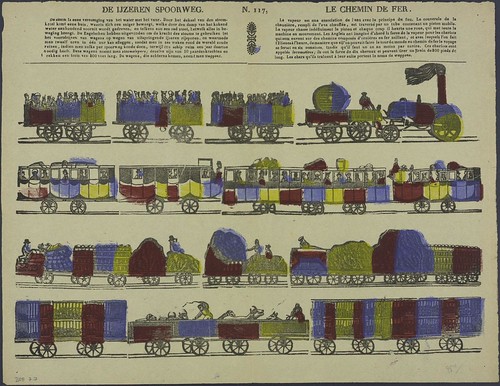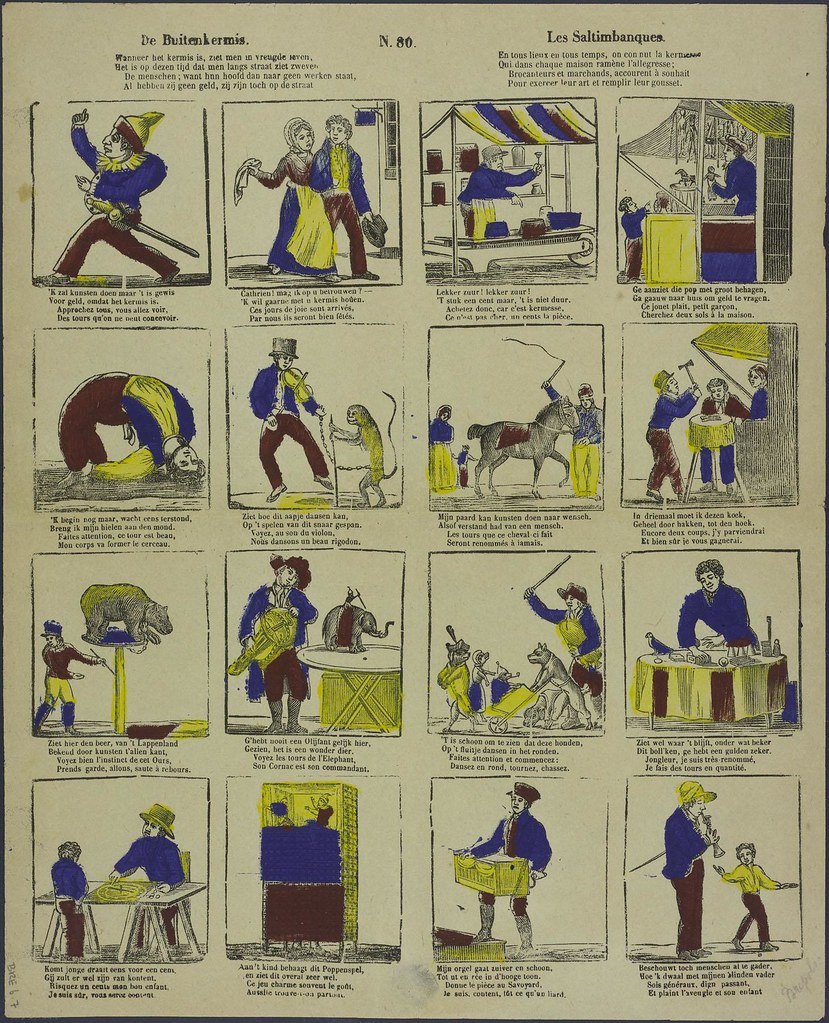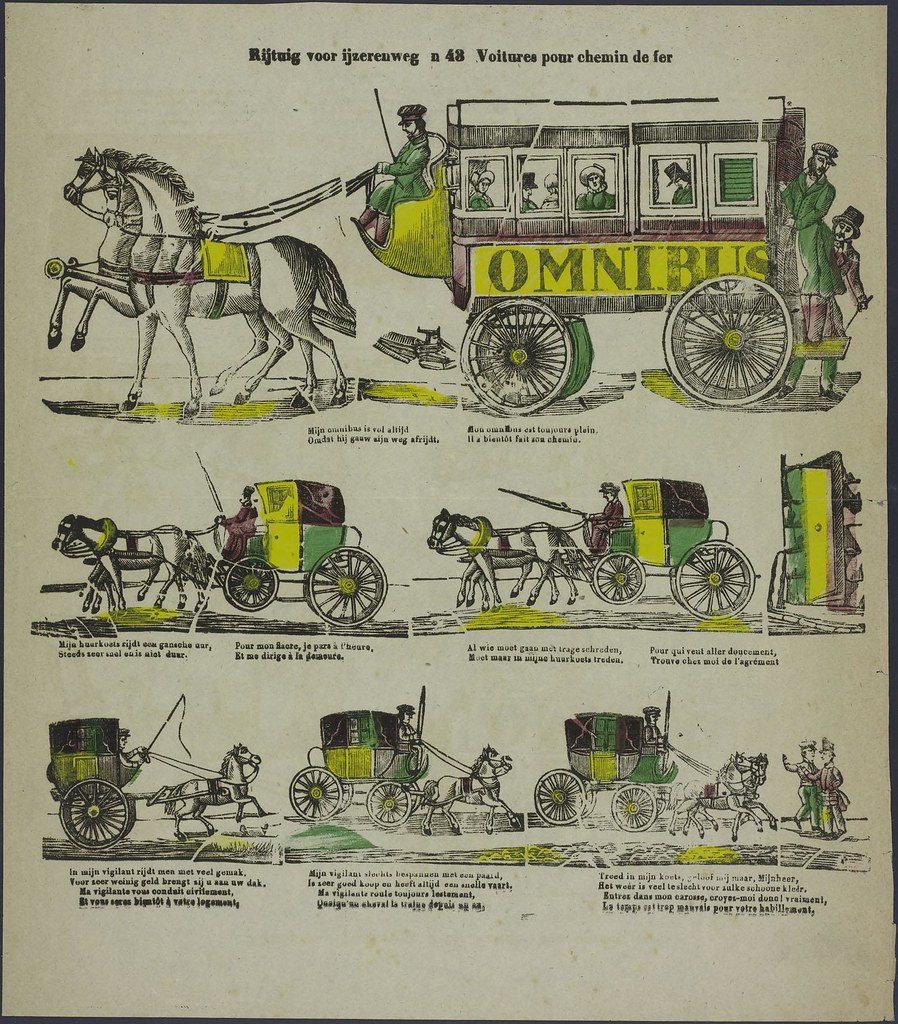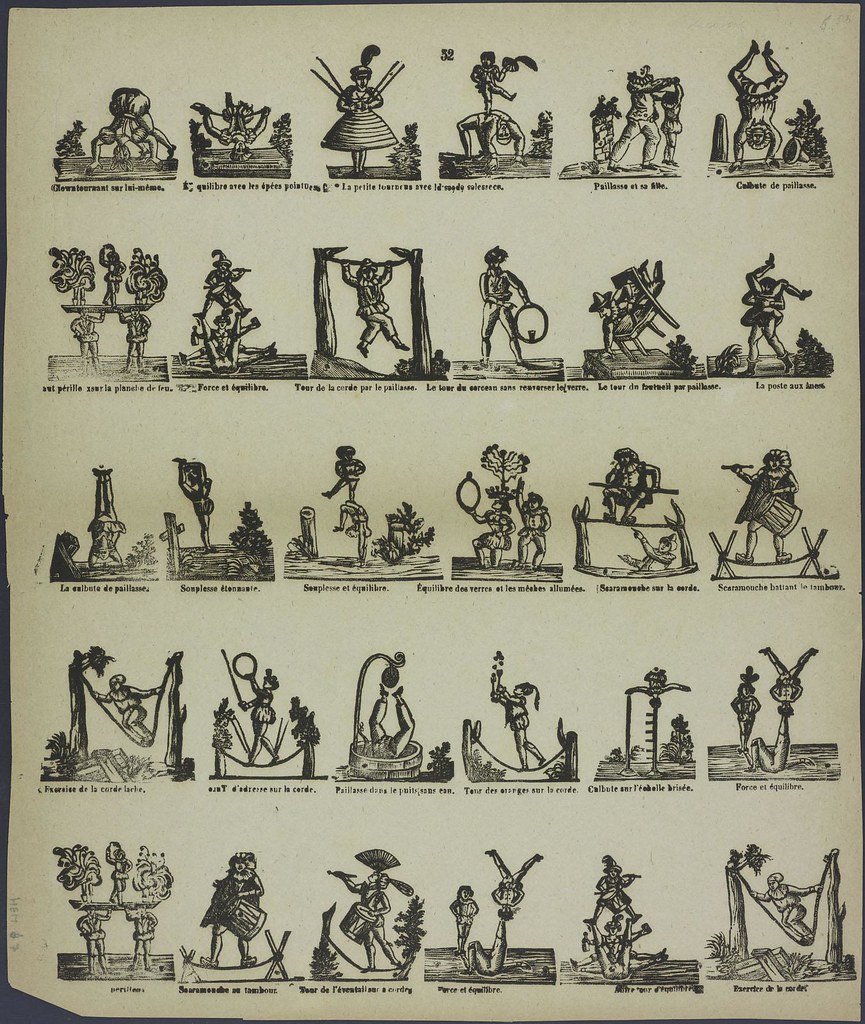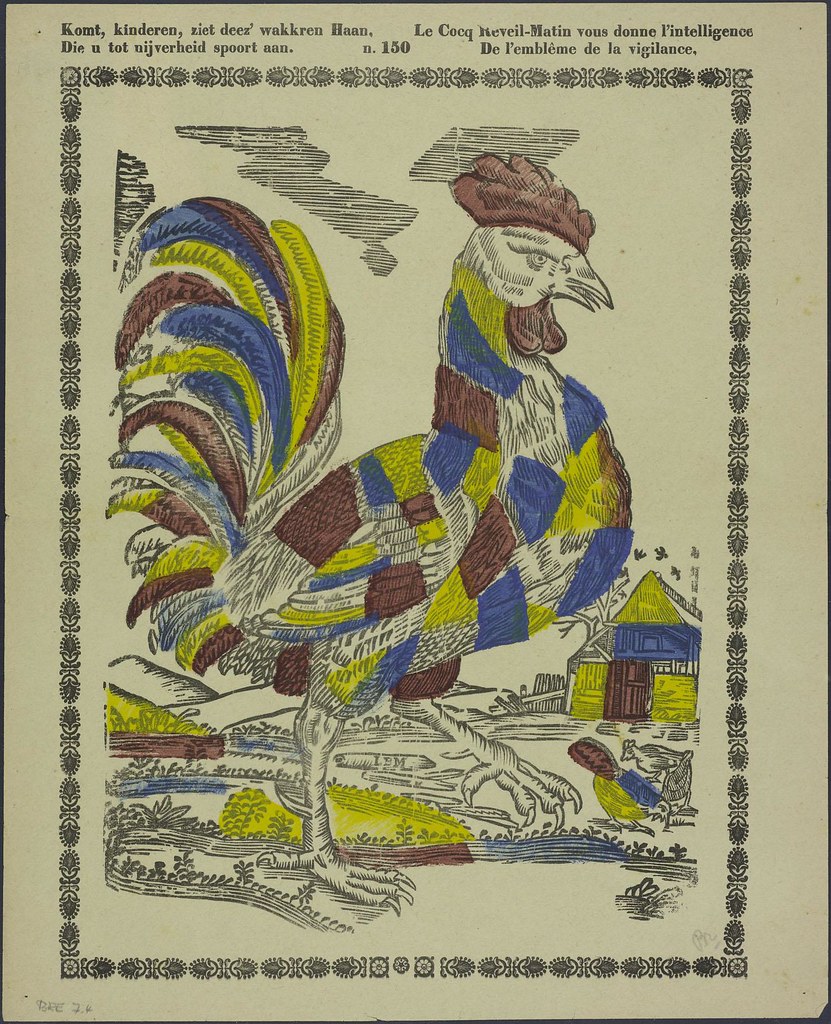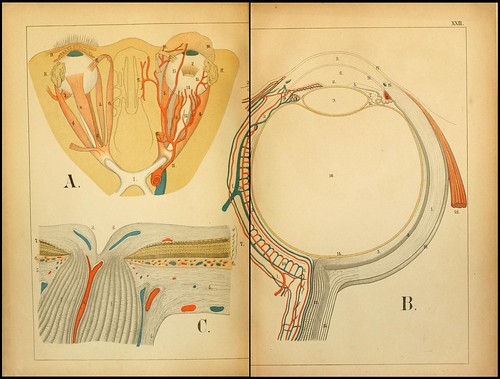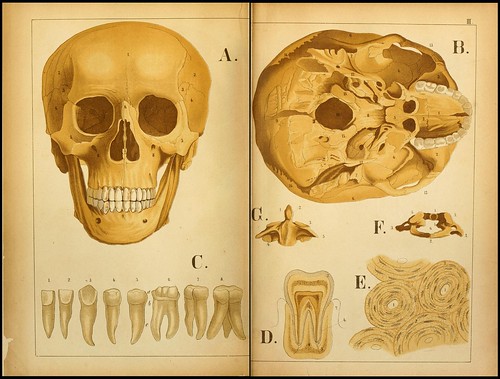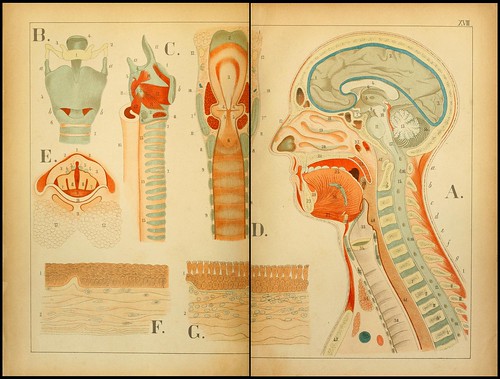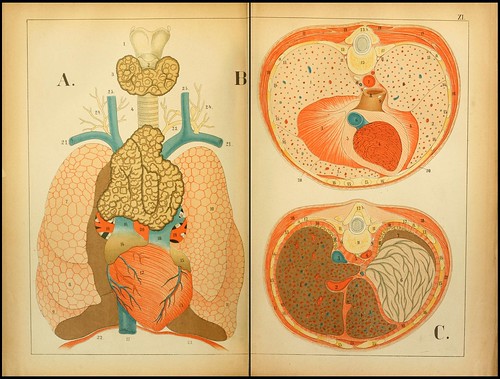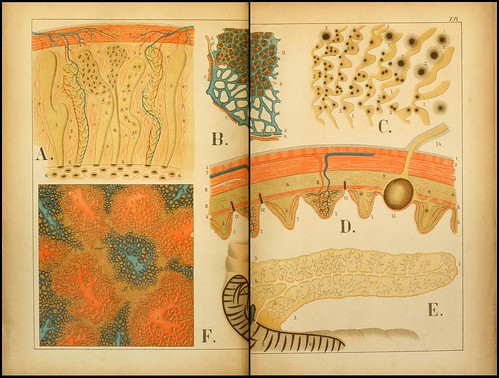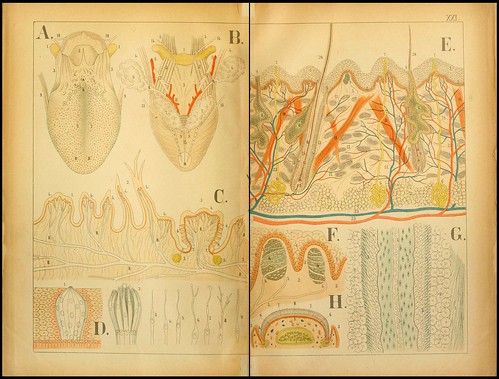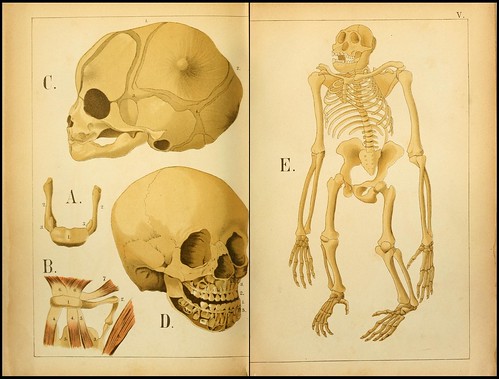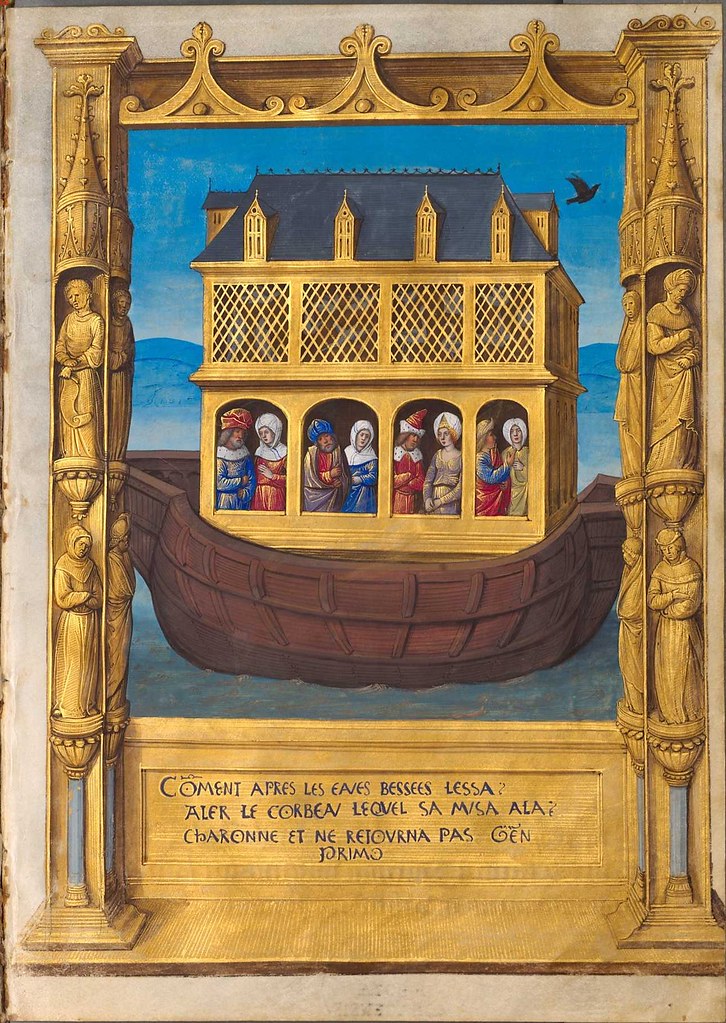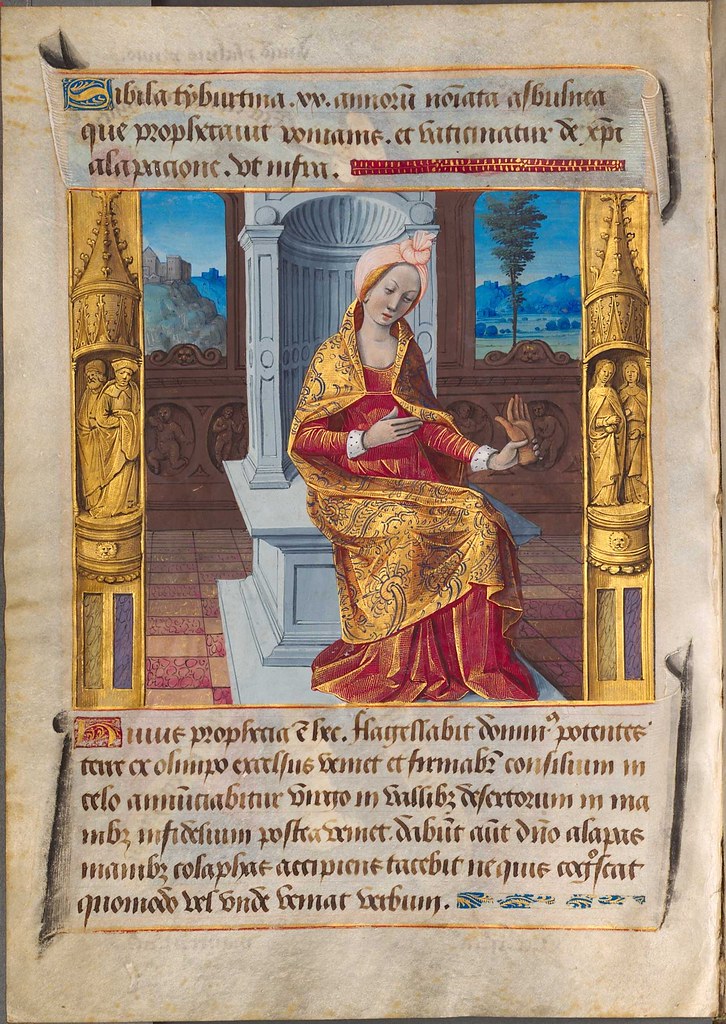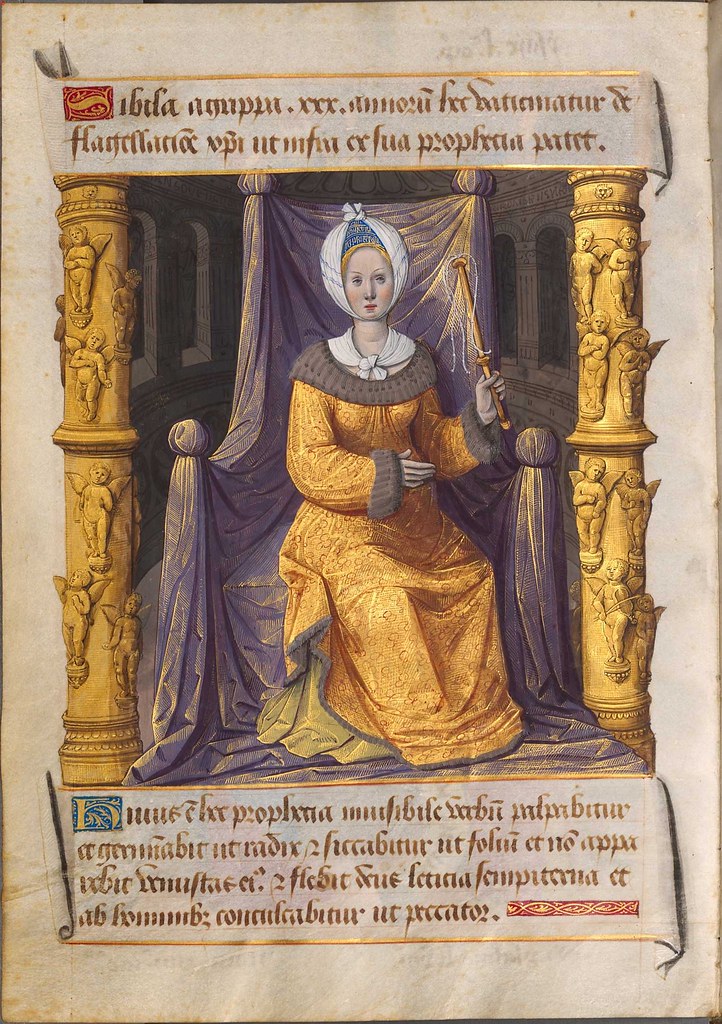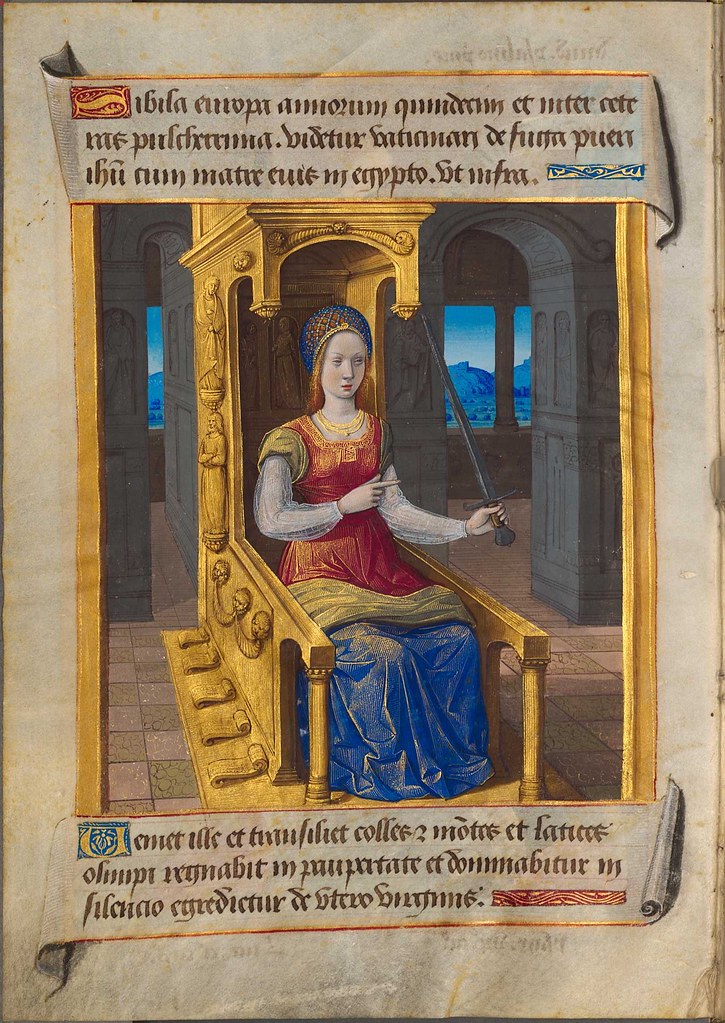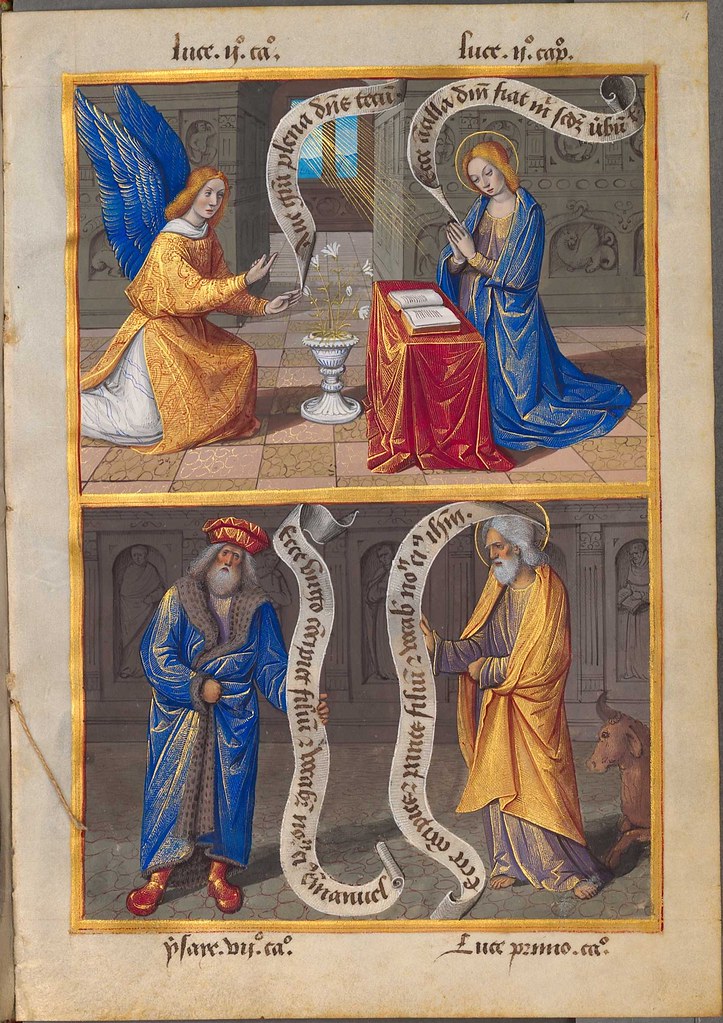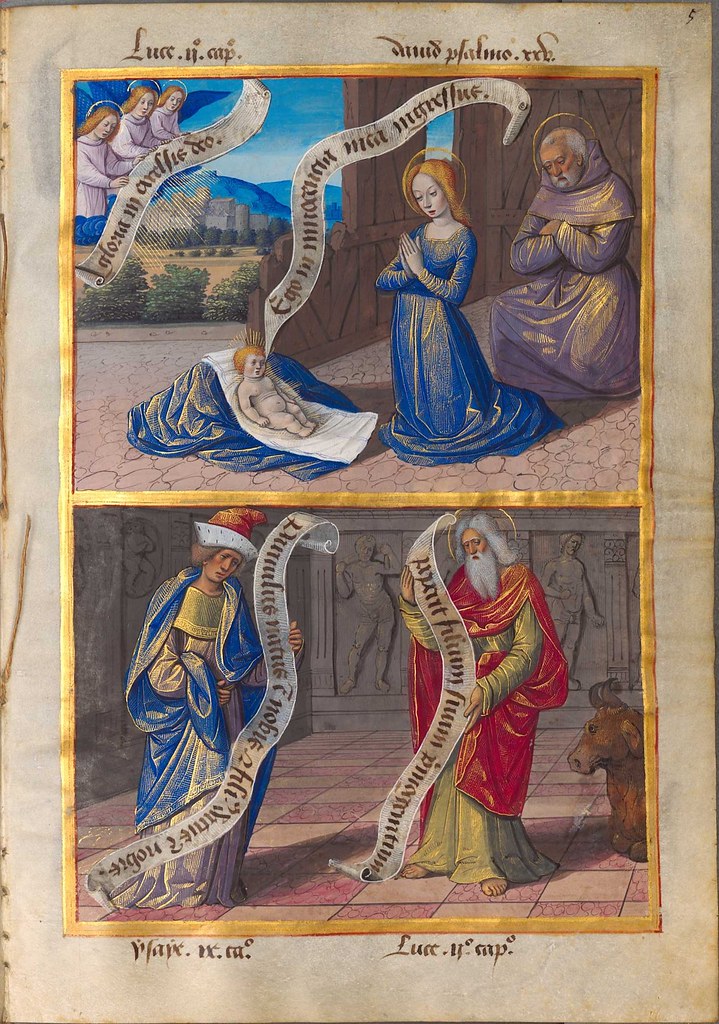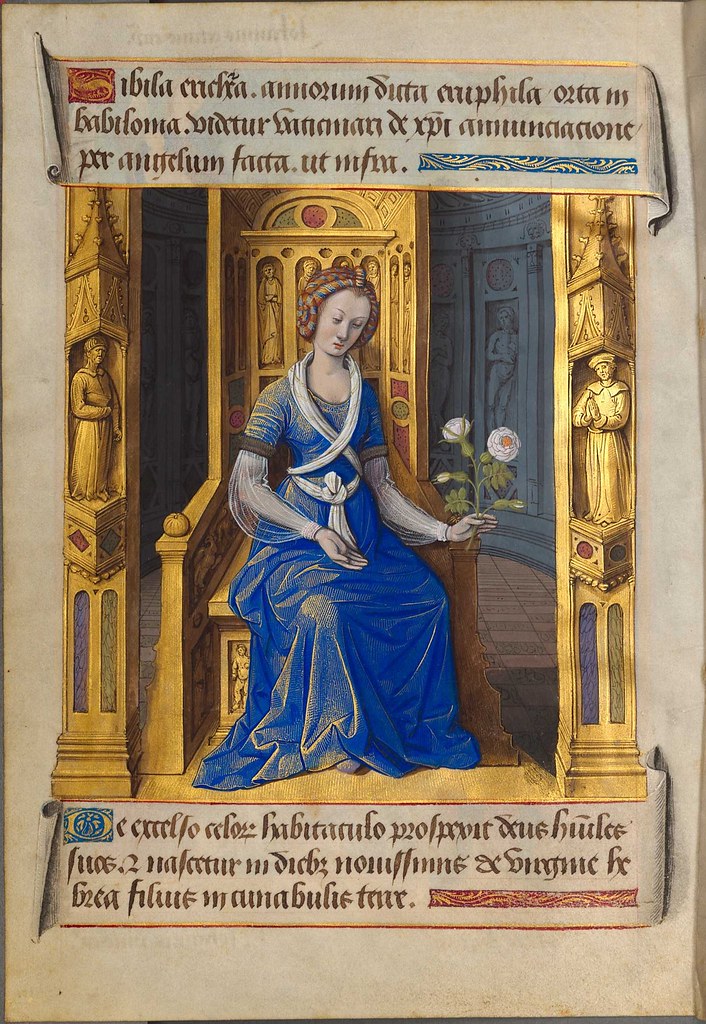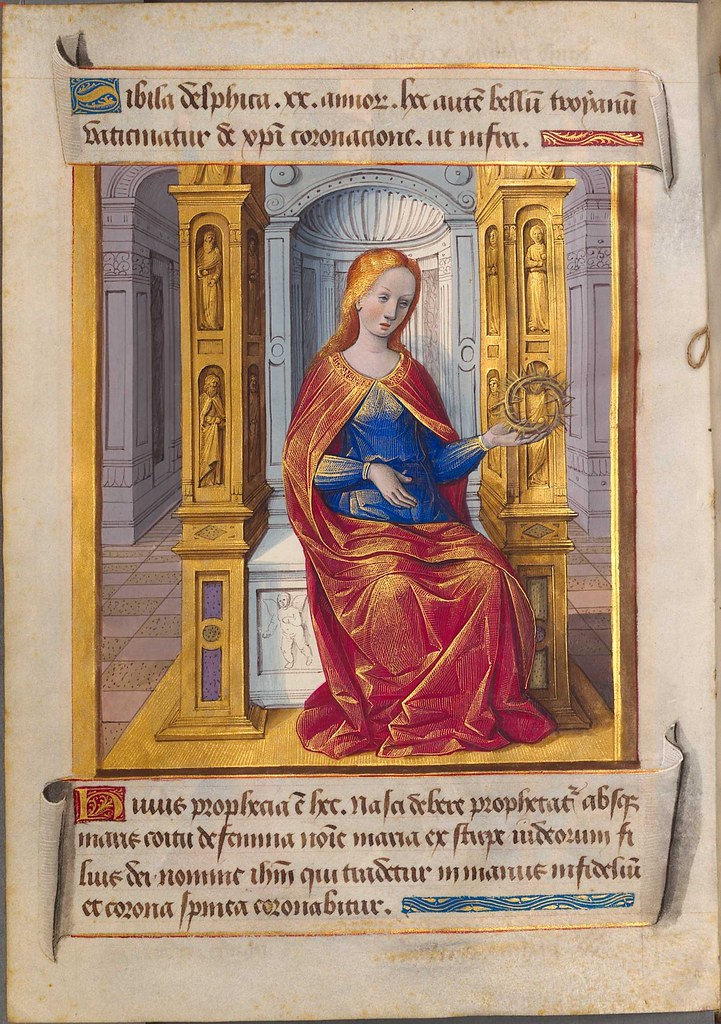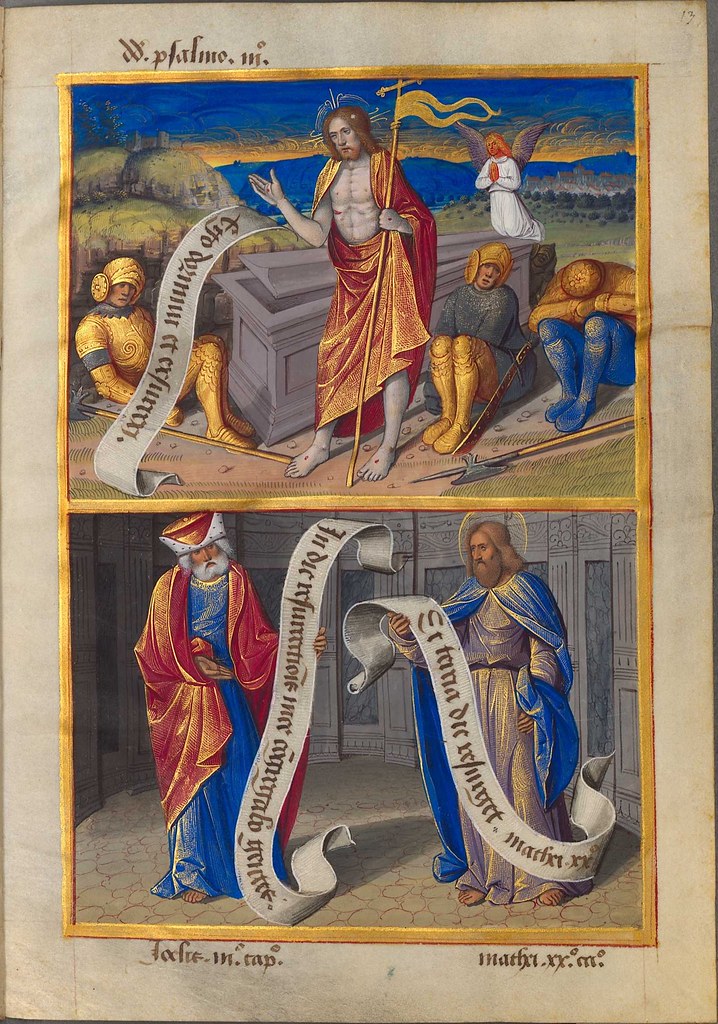Mistick Krewe of Comus 1873 'Missing Links' Parade Costume Designs
&
Mistick Krewe of Comus 1910 Float Designs
New Orleans, Louisiana
&
Mistick Krewe of Comus 1910 Float Designs
New Orleans, Louisiana
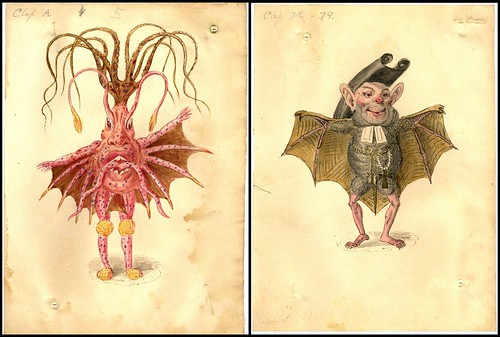
Sea Nettle and Bat
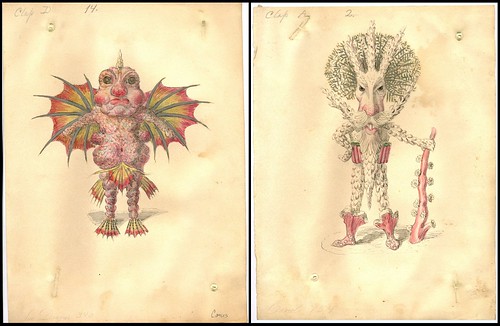
Sea Dragon and Coral Polyp
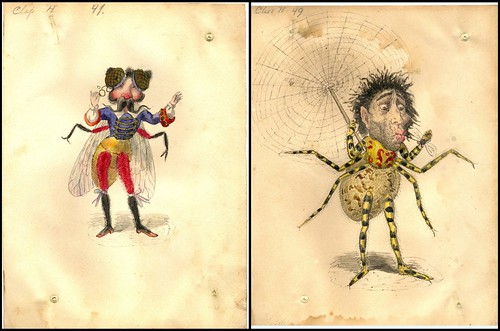
Fly and Spider
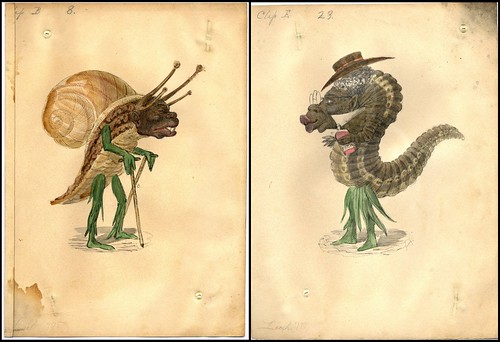
Snail and Leech
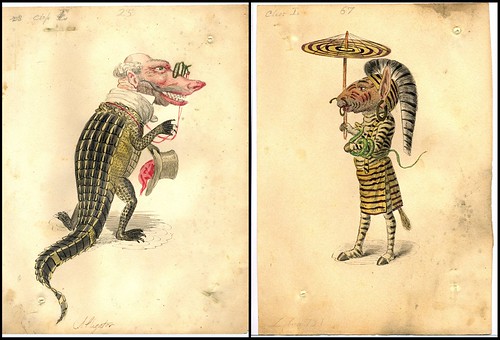
Alligator and Zebra

Salamander and Lobster

African Elephant and Wild Boar
- Comus is the Greek god of revelry, merrymaking and festivity. He was the son and cup-bearer of the god Dionysus.
- Krew is an organisation that puts on a parade or ball for the Carnival season (New Orleans Mardi Gras and some other carnival sites in the US).
- Mistick Krewe of Comus is a New Orleans Carnival krewe founded in 1856 - prior to this, Carnival celebrations in New Orleans were mostly confined to the Roman Catholic Creole community, and parades were organised informally.
Tulane University Libraries has (so far) contributed two digital collections from their Carnival research works to the Louisiana Digital Library. [via]
Above, sample drawings from the Mistick Krewe of Comus 1873 'Missing Links' Parade Costume Designs {browse} [the collection contains 101 sketches]
"This collection is the complete set of costume design drawings for the 1873 Mystick Krewe of Comus "Missing Links" parade. It was an important event in New Orleans' Mardi Gras history, becoming one of the first major parades to use satire and political commentary.
That year, there were no floats, but the members paraded in costumes made of papier-mache, based on the drawings in this collection. A Swedish lithographer, Charles Briton, made the designs. [..] The official name of the parade was "The Missing Links to Darwin's Origin of Species". [..]
Many of the images depict figures related to the Civil War and Reconstruction, such as Ulysses S. Grant, Benjamin Butler, and Louisiana Governor Henry Warmoth. Also depicted are notable figures such as Charles Darwin, and Algernon Badger (head of the Metropolitan Police)."
The images below are from the Mistick Krewe of Comus 1910 float designs {browse}
"This collection is the complete set of float design drawings by Jennie Wilde for the 1910 Comus Mardi Gras parade in New Orleans, Louisiana. [..]
Jennie Wilde (1865-1913) was an artist who designed floats for many New Orleans Mardi Gras parades, including the Mistick Krewe of Comus and the Knights of Momus. The theme of the 1910 Comus parade was the Prophet Mahomet (Muhummad) and related subjects."
UPDATE: Recommended by a commenter: 'Mardi Gras New Orleans' by Henri Schindler, 1997.
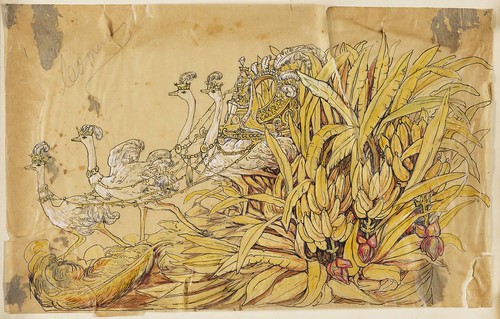
Comus

The Cock

The Koran

Cadijah
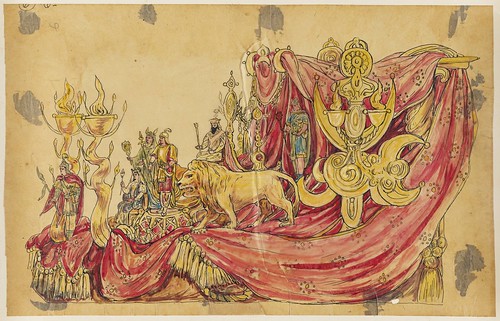
Habib the Wise
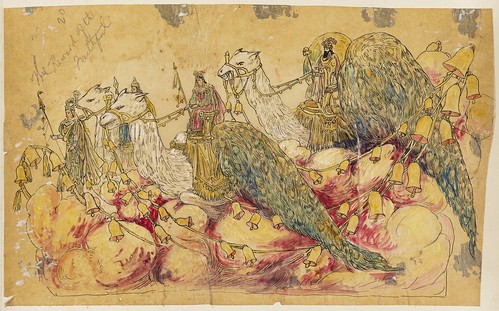
Reward of the Faithful
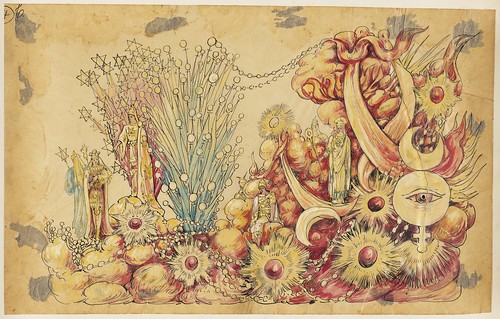
The Mystic Shrine
